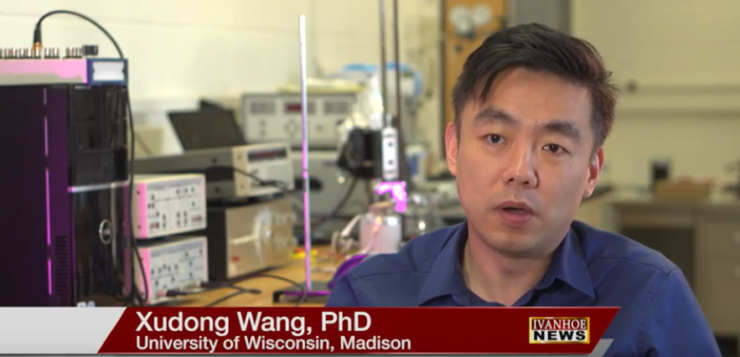Xudong Wang, PhD, Grainger Institute for Engineering Professor at the University of Wisconsin, Madison talks about an electric bandage that has the potential to revolutionize wound care.
Can you tell me about this latest development?
WANG: We have been working over 10 years on this biomechanic energy harvesting. At the beginning, we were trying to use electricity as a power source. But a few years ago, we started to realize our body, mainly biological processes, is controlled by electricity. We think our device has a unique way to produce those electric stimulations to help many body functions controlled by our natural electricity. This wound healing is one of the first approaches we are trying to do. We have this hypothesis that if we provide additional electrical field, it will help the cell to grow and facilitate the wound recovery.
You tested the device on mice?
WANG: Yes, on rats.
Can you go into detail about the study and what you did?
WANG: We made a simple flexible device to produce around one-volt electric voltage based on the breath of the rat and applied the device on the rat body. The device also had a pair of dressing electrodes placed right on top of the wounded area. We use that body generated electricity to help the wound recovery. The result is impressive. We had a one-centimeter by one-centimeter square wound. This wound usually will recover in two weeks. Our device helped the wound recover in three days with a minimal formation of scars.
Can you go into a little bit of the science of how electricity helps wounds heal?
WANG: Yes. There are two ways for the electrical potential to help the wound recover. One way is the electric field can facilitate, or stimulate, cell regeneration. On the electric field, the cell can recover at a more rapid rate. The second way is the electric field can help the fibroblast cells to align themselves along the electric field direction. They will form a more organized framework for the cell to grow, therefore the cell can align faster and with less formation of scars.
What’s the next step? How do you get this to consumer hands?
WANG: Currently, we have some internal funding from the university to help us move forward. We’re also applying for grants from NIH to move this technology forward. So, our next step is to try this technology on more human-relevant skin, such as pig. We also want to test it on the human skin as well and find out the most appropriate stimulation conditions. We are collaborating with another professor in the medical school and a medical doctor of of Wound Healing .
What type of wounds do you expect this to work on?
WANG: We are just working on acute wound, or fresh cut wound now. That’s our first step to perform more fundamental understanding how the electric stimulation can help and what is the optimal condition. After this, we’re trying to recover wounds such as chronic wounds or burn wounds. Those will have a higher impact to this study.
What implications do you believe this will have for the medical world?
WANG: Using electric pulses to help chronic wound recover is not 100 percent new. There are already large devices to help the patient with chronic wounds. But the equipment is so sophisticated that the patient needs to go to hospital to get the treatment usually once per week. So, it’s not very convenient and there’s a lot of effort. Our technology is revolutionary for this kind of treatment. We can make it become a daily normal treatment just like using a bandage from the grocery store. People can handle it all by themselves with maybe even better results. I would say it will be more convenient, lower cost, and probably get better results.
When you did the study on mice, how long did you keep it on them before you started seeing the wound heal?
WANG: We keep it there for usually three days. We put it on and open it in a few hours to see how it’s going. We have a series of observations of how the wound recovered during the processes. So once a wound is fully recovered, we remove the bandage usually in two or three days.
Just to clarify, did the wound heal completely or did it start to heal within the three-day process?
WANG: It healed completely, fully closed. We observed the skin cross section and showed the skin was completely grown without any scars.
END OF INTERVIEW
This information is intended for additional research purposes only. It is not to be used as a prescription or advice from Ivanhoe Broadcast News, Inc. or any medical professional interviewed. Ivanhoe Broadcast News, Inc. assumes no responsibility for the depth or accuracy of physician statements. Procedures or medicines apply to different people and medical factors; always consult your physician on medical matters.
If you would like more information, please contact:
Xudong Wang, PhD
Sign up for a free weekly e-mail on Medical Breakthroughs called First to Know by clicking here





